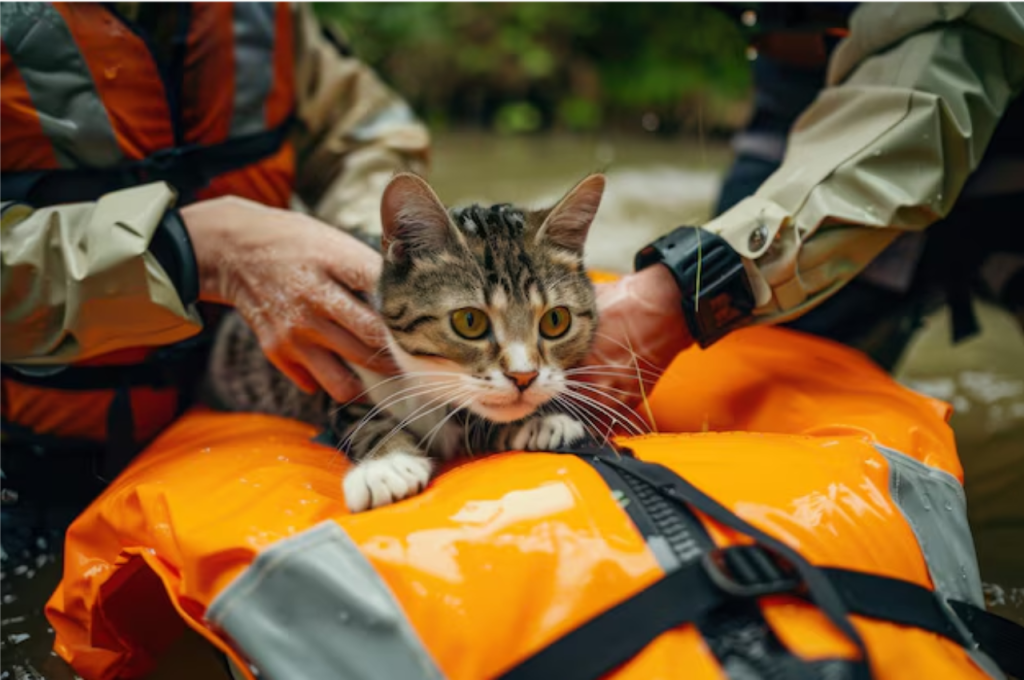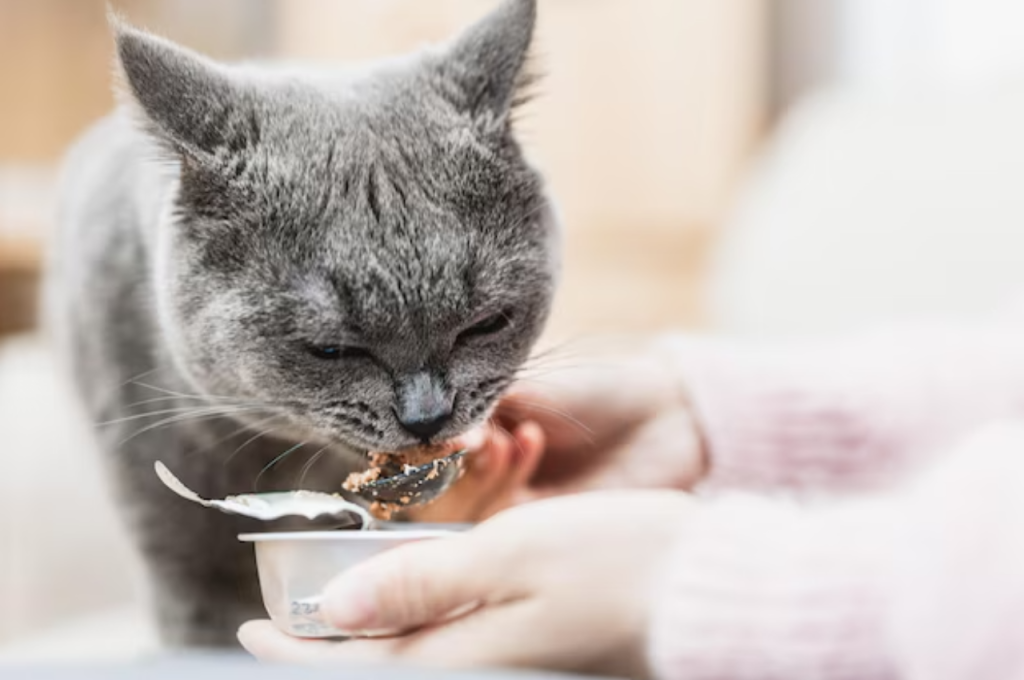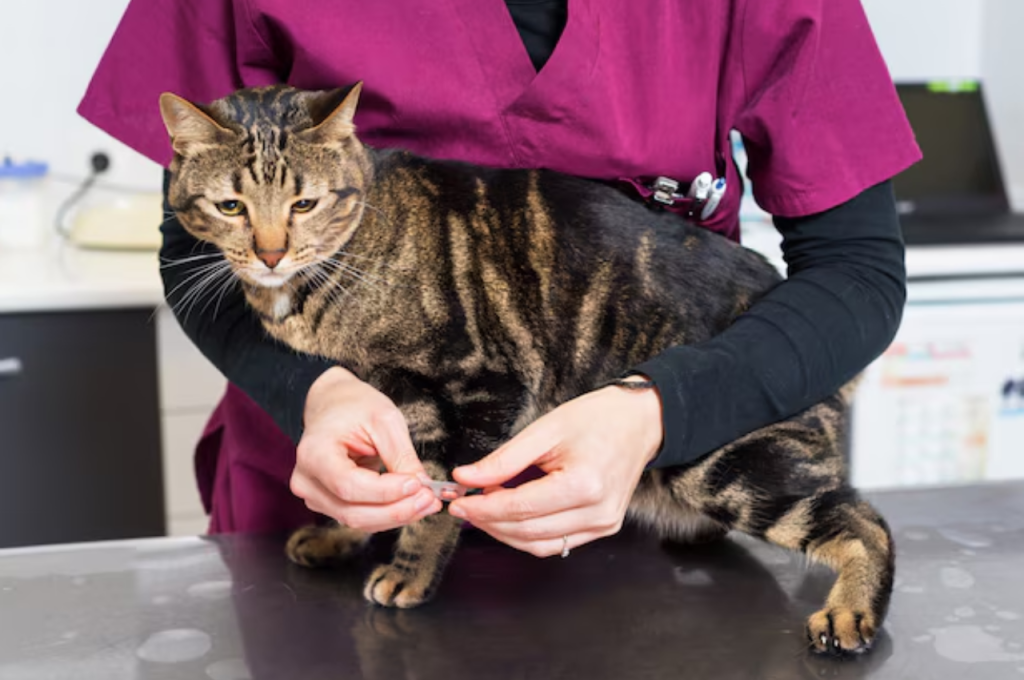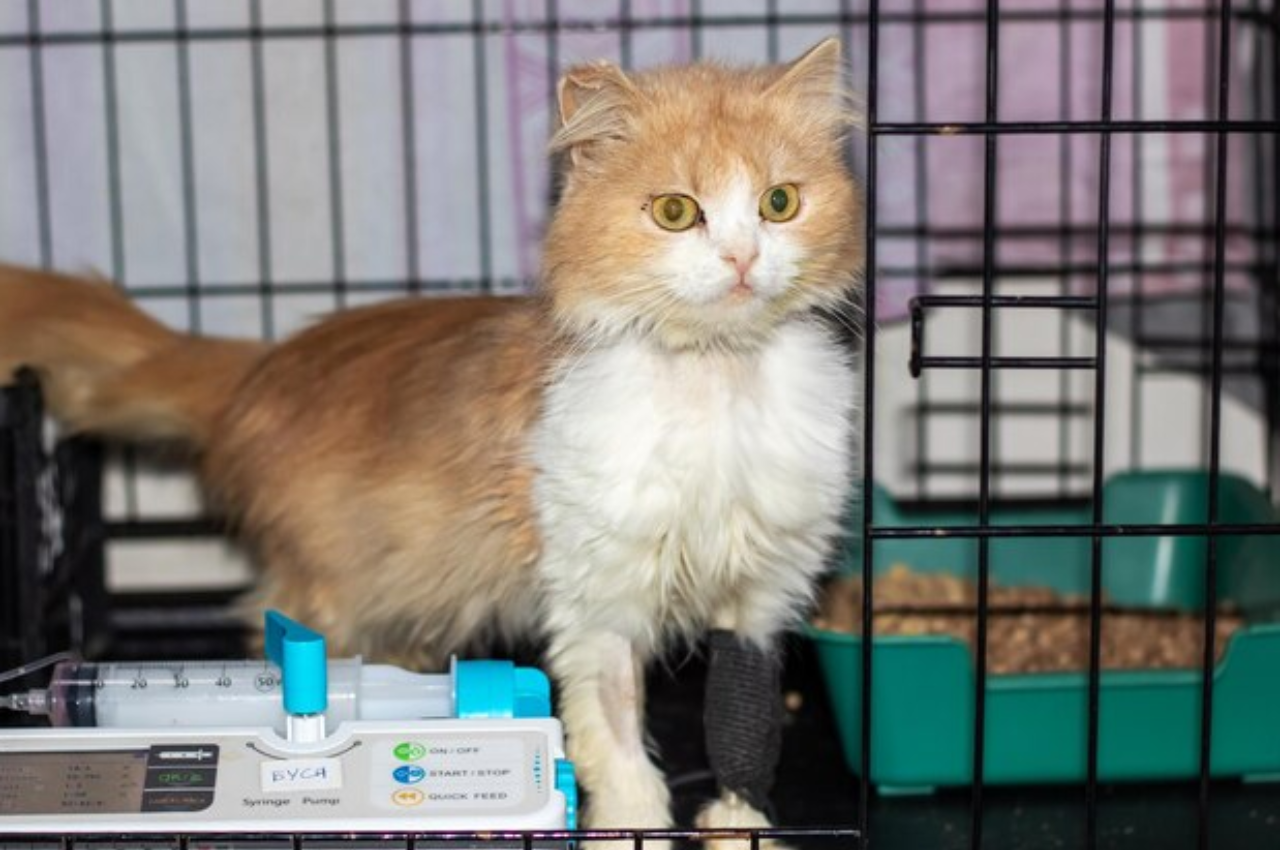To rescue an injured cat at home, you should first assess the situation and ensure your safety. When a beloved feline is hurt, it’s natural to want to help them immediately.
However, it’s important to approach the situation with caution and care. By following a few simple steps, you can provide the necessary aid to an injured cat in the comfort of your own home. In this blog post, we will guide you through the process of rescuing an injured cat, from assessing their condition to providing basic first aid. Whether it’s a minor injury or a more serious situation, being prepared and acting swiftly can make a significant difference in saving your furry friend’s life. So, let’s dive in and learn how to effectively rescue an injured cat at home.
The Initial Approach
When rescuing an injured cat at home, it’s crucial to approach the situation with care and caution. The initial approach sets the tone for the entire rescue process, and focusing on safety and gentle handling techniques is paramount. Here’s how to ensure the safety of both yourself and the injured cat during the initial approach:

Safety First
Before approaching the injured cat, ensure your own safety by wearing gloves to protect yourself from potential scratches or bites. Additionally, find a quiet and calm space to avoid startling the cat further. Eliminate any potential hazards in the area to create a safe environment for both you and the cat.
Gentle Restraint Techniques
When approaching the injured cat, use gentle and slow movements to avoid causing distress. Approach the cat from the side rather than head-on, and speak softly to reassure the cat. If necessary, use a towel or blanket to gently restrain the cat while avoiding putting pressure on the injured areas.
Assessing The Situation
When it comes to rescuing an injured cat at home, the first step is assessing the situation to determine the severity of the injury. This initial assessment will help you decide whether the cat requires immediate veterinary attention or if you can provide first aid at home. Here’s how to effectively assess the situation when you come across an injured cat.
Identifying Signs of Injury
Start by observing the cat from a safe distance to avoid causing further distress. Look for visible wounds, bleeding, limping, or any signs of pain. Check for irregular breathing, abnormal posture, and changes in behavior such as excessive hiding or aggression. These signs can indicate the presence of an injury or trauma.
When to Call A Vet Immediately
If the cat is unconscious, experiencing difficulty breathing, or has severe bleeding, it’s crucial to seek immediate veterinary assistance. Additionally, if the cat has sustained injuries from a car accident, fall from a significant height, or any other traumatic event, do not hesitate to contact a veterinarian. Prompt medical attention can significantly improve the cat’s chances of recovery.
Creating a Comfortable Environment
Create a cozy space by placing a soft blanket and water nearby to help an injured cat feel secure and cared for. Keep the area quiet and dimly lit to reduce stress and provide a safe environment for the cat to rest and recover.
Choosing a Quiet Space
When rescuing an injured cat at home, it’s crucial to choose a quiet space. This area should be away from noise and commotion. Find a secluded spot where the cat can feel safe and secure.
Bedding and Warmth
Provide soft bedding to help the injured cat rest comfortably. Blankets or towels can be used to create a warm and cozy environment. Ensure that the bedding is clean and free from any potential irritants. In addition to soft bedding, it’s important to provide warmth. Use a heating pad set on low or a hot water bottle wrapped in a towel to maintain a comfortable temperature for the injured cat.
By creating a quiet space and providing soft bedding and warmth, you can help the injured cat feel safe and comfortable during their recovery.
First Aid Measures
When it comes to rescuing an injured cat at home, knowing First Aid Measures is crucial. Proper first aid can make a big difference in the cat’s recovery.
Stopping Bleeding
- Apply gentle pressure to the wound with a clean cloth.
- Keep the wound elevated above the heart level.
- Use a styptic powder or cornstarch to aid in clotting.
Splinting Broken Limbs
- Secure the limb with a splint to prevent movement.
- Use soft padding around the splint for comfort.
- Seek veterinary help for further treatment.
Nutrition and Hydration
Proper nutrition and hydration are crucial for the recovery of an injured cat at home. Provide your feline friend with fresh water and high-quality food that is rich in nutrients to help them heal quickly and regain their strength. It is important to consult with a veterinarian for specific dietary recommendations based on your cat’s individual needs.

When rescuing an injured cat, nutrition and hydration are crucial for their recovery. Encouraging food and water intake is essential to keep the cat hydrated and provide them with the necessary nutrients to heal. Here are some tips on how to help an injured cat with their nutrition and hydration needs.
Encouraging Food and Water Intake
Encouraging an injured cat to eat and drink can be challenging, but it is necessary for their recovery. Here are some ways to encourage them to eat and drink:
- Offer wet food to increase their water intake
- Ensure that their water bowl is filled with fresh water at all times
- Try different types of food to find what they prefer
- Offer small and frequent meals throughout the day
- Hand-feed them if necessary
What to Feed
What to feed an injured cat depends on their condition. If they have a minor injury, they can eat their regular diet. However, if they have a severe injury or are recovering from surgery, they may need a special diet. Here are some food options for an injured cat:
| Food Type | Description |
| Wet food | Easy to eat and helps with hydration |
| High-protein food | Helps with muscle repair and recovery |
| Low-fat food | Prevents weight gain and helps with digestion |
In conclusion, providing an injured cat with proper nutrition and hydration is vital for their recovery. Encouraging food and water intake and offering the right type of food can help them heal faster. Remember to consult with a veterinarian to determine the best diet for the injured cat.
Pain Management
Learn how to effectively rescue an injured cat at home by implementing proper pain management techniques. Providing quick and gentle care can make a significant difference in the feline’s recovery process.
Recognizing Pain in Cats
Cats may exhibit signs of pain through changes in behavior or posture.
- Hissing or growling when touched
- Limping or reluctance to move
- Decreased appetite or vocalization
Safe Pain Relief Options
It’s crucial to consult a vet before administering any pain relief to your injured cat.
- Prescribed Medication: Follow vet’s instructions strictly.
- Heat/Cold Therapy: Apply a warm compress for soothing relief.
- Soft Resting Area: Provide a comfortable space for your cat to rest.
Monitoring and Care
When rescuing an injured cat at home, monitoring and care are crucial. Provide a quiet, warm space, offer food and water, and observe for any changes in behavior or symptoms. Seek immediate veterinary assistance for proper diagnosis and treatment.
Daily Check-up Routine
When rescuing an injured cat at home, it is important to establish a daily check-up routine. This routine should include monitoring the cat’s behavior, appetite, and bathroom habits. It is important to check the cat’s injury and make sure it is healing properly. Keep a close eye on the wound, and if you notice any signs of infection such as redness, swelling, or discharge, contact your vet immediately.
When to Update The Vet
It is important to keep your vet updated on your cat’s progress. If the cat’s condition worsens or does not improve, contact your vet immediately. Additionally, if you notice any new symptoms or changes in behavior, it is important to contact your vet. Your vet will be able to advise you on the best course of action for your cat’s recovery.
Caring for Your Injured Cat
Caring for an injured cat requires patience and dedication. Make sure your cat is comfortable and has a quiet place to rest. Provide your cat with plenty of fresh water and food, and ensure that the litter box is clean. If your cat is on medication, make sure to administer it as prescribed by your vet.
Preventing Further Injury
To prevent further injury, it is important to keep your cat indoors. This will prevent your cat from being exposed to other animals or hazards that could cause further harm. Additionally, make sure to keep your cat’s environment safe and free from any potential dangers. Rescuing an injured cat at home requires constant monitoring and care. By establishing a daily check-up routine, keeping your vet updated, and providing your cat with a safe and comfortable environment, you can help your cat recover and prevent further injury.
Remember to be patient and dedicated in caring for your cat, and always contact your vet if you have any concerns.
The Recovery Process
Learn the steps to rescue an injured cat at home and aid in its recovery process. Start by gently assessing the cat’s condition and providing a safe, quiet space for rest. Keep the cat warm and offer water, then seek veterinary assistance for further care.

After rescuing an injured cat, the recovery process is crucial to help the cat heal properly. The recovery process involves not only physical therapy but also emotional support and love. Here are some ways to help your injured cat recover from its injuries:
Physical Therapy Basics
Physical therapy is an important part of the recovery process for an injured cat. Here are some physical therapy basics to help your cat heal:
- Follow your vet’s instructions for administering medication and performing wound care.
- Provide a comfortable space for your cat to rest and recover.
- Encourage your cat to move around gently to prevent stiffness and muscle atrophy.
- Gradually increase your cat’s activity level as it heals.
- Use toys and treats to encourage your cat to move and play.
Emotional Support and Love
Emotional support and love are just as important as physical therapy for an injured cat’s recovery. Here are some ways to provide emotional support and love to your injured cat:
- Offer plenty of affection and attention to help your cat feel loved and secure.
- Provide a quiet and peaceful environment to help your cat feel safe and relaxed.
- Use positive reinforcement to encourage good behavior and discourage bad behavior.
- Play with your cat to help it stay active and engaged.
- Be patient and understanding as your cat recovers from its injuries.
Remember, the recovery process for an injured cat may take some time, but with proper physical therapy and emotional support, your cat can heal and return to its happy and healthy self.
Conclusion
In times of need, rescuing an injured cat at home requires quick action and compassion. By following simple steps, you can provide essential care and comfort to a distressed feline companion. Remember, your efforts can make a significant difference in the well-being and recovery of the cat.
